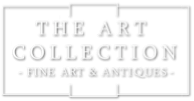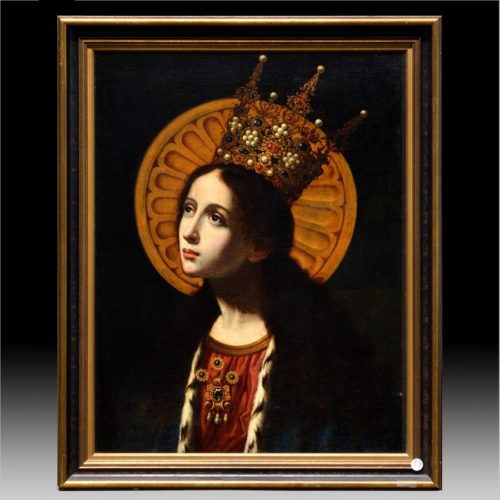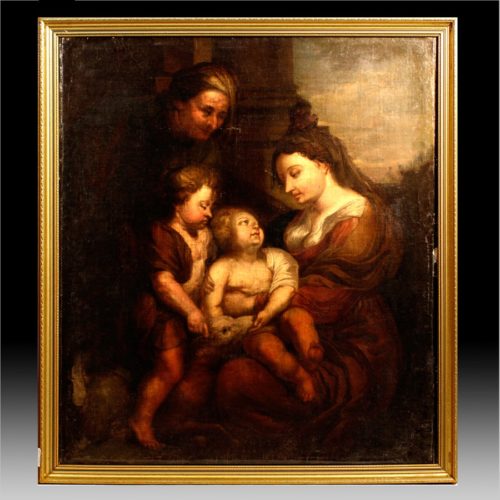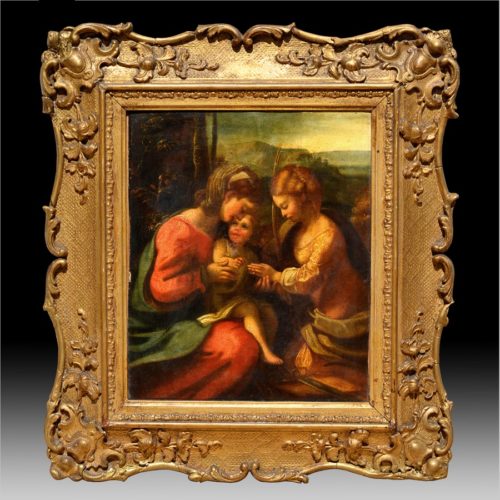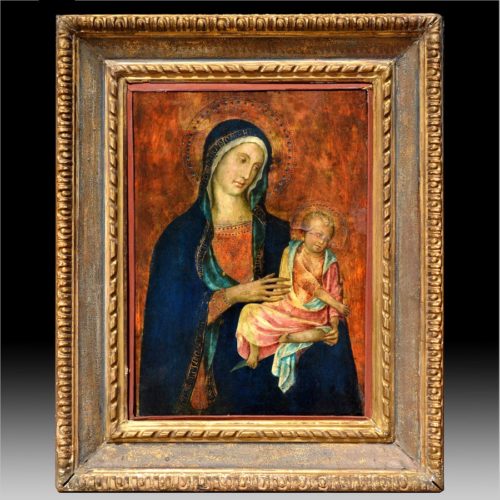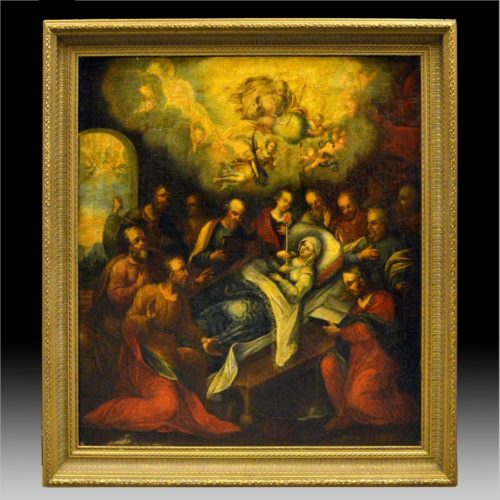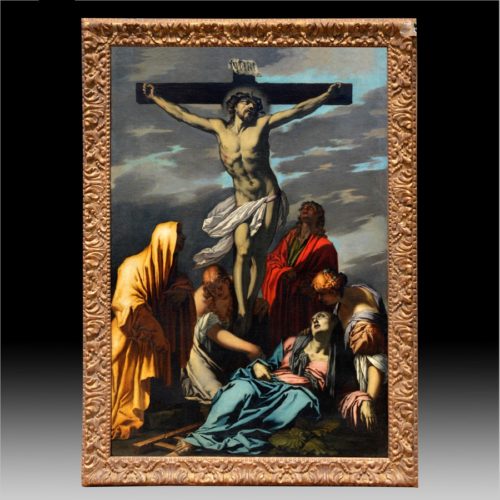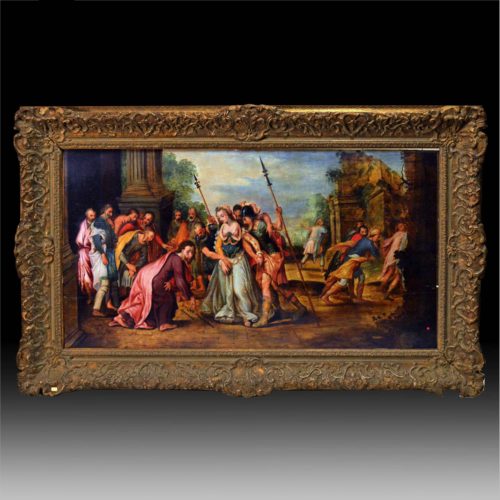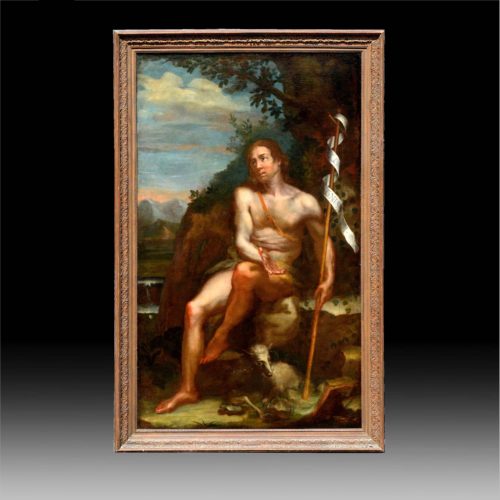-
Francesco Curradi (Italian, 1570-1661) “The Madonna and the Angel Gabriel” Oil on canvas 26 x 20 inches (66 x 50.8 cm) CL102794-83/1 334002-2 @NB-1040 #16
-
Sir Peter Paul Rubens (Flemish, 1577-1640) “The Madonna and Child with the Infant Saint John and Saint Elizabeth” Oil on canvas CL102794-52 140802-2 43 x 36 ½ inches (109.2 x 92.7 cm)
-
Antonio Allegri da Correggio “The Mystic Marriage of Saint Catherine” Oil on canvas 10 ½” x 9” (26.7 x 22.8 cm) Antonio Allegri da Correggio (August 1489 – March 5, 1534), usually known as Correggio (Italian), was the foremost painter of the Parma school of the Italian Renaissance, who was responsible for some of the most vigorous and sensuous works of the 16th century. In his use of dynamic composition, illusionistic perspective and dramatic foreshortening, Correggio prefigured the Rococo art of the 18th century. He is considered a master of chiaroscuro. In 1503 he was apprenticed to Francesco Bianchi Ferrara in Modena, where he probably became familiar with the classicism of artists like Lorenzo Costa and Francesco Francia, evidence of which can be found in his first works. After a trip to Mantua in 1506, he returned to Correggio, where he stayed until 1510.
-
Duccio di Buoninsegna (Italian, 1255-1318) “The Madonna and Child” Oil on panel 18 ½ x 13 inches Duccio di Buoninsegna (Italian; c. 1255–1260 – c. 1318–1319) was an Italian painter active in Siena, Tuscany in the late 13th and early 14th centuries. He is considered to be the father of Sienese painting and, along with a few others, the founder of Western art. He was hired throughout his life to complete many important works in government and religious buildings around Italy. Duccio is credited with creating the painting styles of Trecento and the Sienese school, and also contributed significantly to the Sienese Gothic style. Although much is still unconfirmed about Duccio and his life, there is more documentation of him and his life than of other Italian painters of his time. It is known that he was born and died in the city of Siena, and was also mostly active in the surrounding region of Tuscany. Other details of his early life and family are as uncertain, as much else in his history. Nevertheless, his artistic talents were enough to overshadow his lack of organization as a citizen, and he became famous in his own lifetime. In the 14th century Duccio became one of the most favored and radical painters in Siena. CL102794-10 561202-2 @NB-1040 #7
-
Abraham Bloemaert (Spanish, 1566-1651) “Death of the Virgin” Oil on canvas 48 ½ x 44 ¾ inches Abraham Bloemaert (1566 – 27 January 1651) was a Dutch painter and printmaker in etching and engraving. He was one of the "Haarlem Mannerists" from about 1585, but in the new century altered his style to fit new Baroque trends. He mostly painted history subjects and some landscapes. He was an important teacher, who trained most of the Utrecht Caravaggisti, at least for a period.
-
Francesco Ruschi “The Crucifixion” Oil on canvas 60 ¼ x 40 ½ inches
-
Pieter Aertson (Dutch, 1507-1575) Virgin Mary Oil on panel 22 ½” x 41 ½” Inscribed lower left Pieter Aertsen (Amsterdam, 1508 – 3 June 1575), called Lange Pier ("Tall Pete") because of his height, was a Dutch painter in the style of Northern Mannerism. He is credited with the invention of the monumental genre scene, which combines still life and genre painting and often also includes a biblical scene in the background. He was active in his native city Amsterdam but also worked for a long period in Antwerp, then the centre of artistic life in the Netherlands. His genre scenes were influential on later Flemish Baroque painting, Dutch still life painting and also in Italy. His peasant scenes preceded by a few years the much better-known paintings produced in Antwerp by Pieter Bruegel the Elder.
-
Saint John the Baptist in the Wilderness Oil on Canvas
